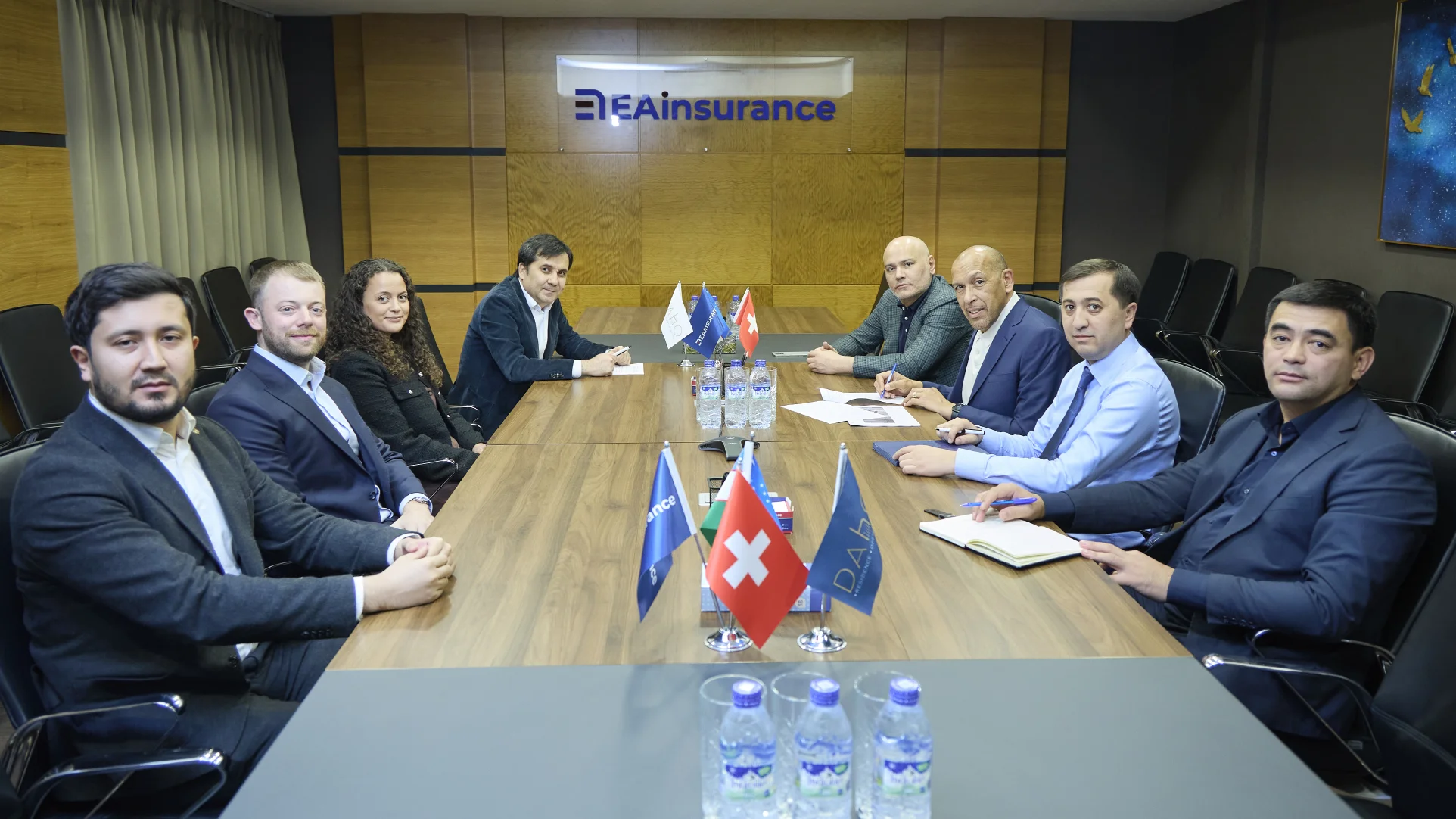
Europrotocol in Uzbekistan: Complete Guide 2025
Full guide to the Europrotocol in Uzbekistan: when it applies, step-by-step crash reporting, document deadlines and OSAGO claim limits.

Understanding the professional risk classification system is essential for effective planning of OSGOR (Compulsory Employer’s Liability Insurance) expenses. All types of economic activity are divided into 20 risk classes with coefficients ranging from 0.571 to 7.714 [1].
Class 1 (Coefficient 0.571):
Design and architectural-planning organizations
Wholesale trade (warehouses, cold storage facilities, distribution centers)
Commodity exchanges, brokerage and dealer firms
Trading houses and commercial centers
Practical significance: Minimal OSGOR expenses. A company with 100 employees can save tens of millions of Uzbek soums annually compared to high-risk sectors.
Class 2 (Coefficient 0.857):
Standardization and metrology centers
State regulatory laboratories
Customs clearance services
Class 3 (Coefficients 0.857–1.143):
Computer maintenance and repair
Beer and malt production
Retail trade
Agricultural trade
💰 Example Calculation for an IT Company with EUROASIA Insurance
Family Café “Osh Markazi” (food service, 15 employees):
Annual payroll fund: 240 million UZS
Risk coefficient: 1.143 (Class 3)
OSGOR cost: 274,320 UZS per year (≈23,000 UZS per month)
[Calculate for your business →]
Construction and Infrastructure:
Class 4: Elevator manufacturing (1.429)
Class 6: Hydroelectric plants (1.714)
Class 8: Thermal power plants (2.286–2.571)
Manufacturing Industry:
Class 5: Auto repair (1.429)
Class 7: Polymer production (2.00–2.286)
Class 9: Plastic product manufacturing (2.857)
Class 10: Non-ferrous metal scrap processing (3.143)
Practical recommendations: Businesses in these sector
xample Calculation for a Manufacturing Company
Silk Road Textile Factory (silk production, 200 employees):
Annual payroll fund: 1.8 billion UZS
Risk coefficient: 4.571 (Class 15)
OSGOR cost: 8,227,800 UZS per year (≈686,000 UZS per month)
[Get a personalized quote →]
Metallurgy and Heavy Industry:
Classes 11–12: Hard alloy production, scrap metal processing (3.143–3.714)
Classes 13–14: Metallurgical plants (4.00)
Steel, cast iron, pipe, and rolled metal production
Chemical Industry:
Class 15: Caustic soda production (4.286)
High-Hazard Industries:
Class 16: Coefficient 4.571
Class 17: Mining industry (5.143)
Class 18: Explosive production (5.714)
Class 19: Nuclear energy (6.00)
Class 20: Underground coal mining, tungsten-molybdenum ore processing (7.714)
Critically important: Class 20 companies pay 13.5 times more than Class 1. For a plant with 1,000 employees, the annual premium difference may total hundreds of millions of UZS.
Example Calculation for a High-Risk Industry
Mining complex (coal extraction, 5,000 employees):
Annual payroll fund: 25 billion UZS
Risk coefficient: 7.714 (Class 20)
OSGOR cost: 192,850,000 UZS per year (≈16.1 million UZS per month)
Even large enterprises can benefit from EUROASIA Insurance’s personalized terms and expert support.
Calculation Methodology
Base formula:
Premium = Insured amount × 0.001 × Risk coefficient × Headcount [2]
According to current regulations, the insured amount per employee is equal to 50 times the minimum wage.
Example: Business with 100 employees
Industry | Class | Coefficient | Relative Cost |
|---|---|---|---|
IT Company | 1 | 0.571 | 1x (baseline) |
Retail | 3 | 1.143 | 2x |
Construction | 7 | 2.286 | 4x |
Metallurgy | 14 | 4.00 | 7x |
Chemical Industry | 15 | 4.286 | 7.5x |
Coal Mining | 20 | 7.714 | 13.5x |
Small Business (10–50 employees):
Low-risk sectors: minimal costs
High-risk sectors: significant budget strain
Medium Business (50–200 employees):
Active risk management is essential
Safety investments become cost-effective
Large Business (200+ employees):
Critical need for safety programs
Potential for reduced rates through improved safety metrics
EUROASIA Insurance: The Ideal Solution for Any Business
No matter your company size or sector, EUROASIA Insurance offers:
For Small Business:
Fast 5-minute online application
Minimal paperwork (only TIN)
Affordable rates from 0.1%
For Medium Business:
Dedicated account managers
Flexible payment terms
Risk optimization consultations
or Large Business:
Custom insurance programs
Corporate discounts
Full-service insurance support
1. Accurate Activity Classification
Problem: Many companies are misclassified, leading to overpayment.
Solution:
Analyze core business operations
Request reclassification from the insurer
Provide documentation to justify business specifics
Example: A trading company with minor production activities may qualify for Class 3 (trade) instead of Class 7–10 (manufacturing).
2. Occupational Safety Improvement Programs
Investments:
Modern protective equipment
Employee training
Process automation
Regular medical check-ups
Economic Effect:
Lower coefficient with fewer accidents
Discounts of 20–30% off base rate
ROI within 2–3 years
3. Managing Injury Statistics
Key Metrics:
Number of accidents per 1,000 employees
Lost workdays
Severity of injuries
Occupational diseases
Measures:
Keep detailed records
Analyze root causes
Implement preventive actions
Document safety improvements
4. Choosing the Right Insurer
Selection Criteria:
Experience in your sector
Speed of claims processing
Discount availability
Service quality
Negotiation Leverage:
Low incident history
]]High insurance volume
Full-service insurance package
Long-term partnership
Why EUROASIA Insurance Is the Optimal Choice
Experience: Years of expertise across all economic sectors
Speed: Fast claim resolution and payouts
Technology: Modern digital solutions for business
Support: Dedicated managers and 24/7 assistance
Reliability: Financial stability and impeccable reputation
[Become a EUROASIA Insurance client →]
IT & Telecommunications:
Low physical risks; main issues are computer-related illnesses.
Strategy: Ergonomic workspaces, eye and posture health programs.
Construction:
High-risk activities: height work, heavy machinery.
Strategy: Strict safety protocols, quality gear, and proper training.
Manufacturing:
Risks: machinery, chemicals, high temperatures.
Strategy: Automation, safety systems, regular maintenance.
Trade & Services:
Low manufacturing risk; key issues are lifting injuries.
Strategy: Warehouse mechanization, safe work method training.
Process Automation:
Electronic policies: Fast issuance, auto-renewal
Online calculators: Instant cost adjustments
Mobile apps: Report insurance cases
Monitoring Systems:
IoT sensors: Real-time workplace monitoring
Video analytics: Detect safety violations
Predictive analytics: Forecast risks via data
System Integration:
ERP: Staff changes auto-tracked
HR systems: Linked to employee data
Finance systems: OSGOR expense planning
For Small Business:
roper classification = main cost lever
Basic safety = low-cost, high-impact
Choose insurers wisely
For Medium Business:
Comprehensive safety programs
Automate dangerous operations
Maintain detailed statistics for discounts
For Large Business:
rporate safety standards
Internal safety departments
Insurance partnerships for tailored plans
OSGOR in Uzbekistan is more than a legal obligation—it’s a powerful risk management tool. Understanding risk classification, proactively managing safety indicators, and strategically selecting insurers helps minimize costs and improve workplace safety.
This is especially vital for high-risk sectors (Classes 15–20), where insurance coefficients can take up significant portions of payroll budgets. Investments in safety and digital tools pay off not just through lower premiums but through higher productivity and employee loyalty.
EUROASIA Insurance is the ideal OSGOR partner for any company in Uzbekistan, offering innovative technologies, personalized service, and reliable protection—regardless of indu
[1] Law of the Republic of Uzbekistan “On Compulsory Insurance of Employer’s Civil Liability” (April 16, 2009) – https://lex.uz/acts/1471201
[2] Government Resolution No. 177 on Rules for Compulsory Employer’s Liability Insurance (June 24, 2009) – https://lex.uz/acts/1493387
[3] Insurance Market Development Agency under the Ministry of Finance of Uzbekistan – https://aic.uz/ru/smotret-strahovanie/41
[4] EUROASIA Insurance – OSGOR for Businesses – https://eai.uz/ru/business/osgor

Full guide to the Europrotocol in Uzbekistan: when it applies, step-by-step crash reporting, document deadlines and OSAGO claim limits.

EUROASIA INSURANCE announced 2025 results: insurance premiums increased 3.2x, net profit grew 5.8x. Details on Granite platform implementation and 2026 forecasts.

Fourth winner of EUROASIA Insurance winter giveaway received heated seat cover and EuroKASKO Side Parts module. Next draw December 29 at 1:00 PM!

Third winner of EUROASIA Insurance winter giveaway from Uzbekistan region! Car vacuum cleaner and EuroKASKO module of choice awarded. Next draw December 22 at 1:00 PM!